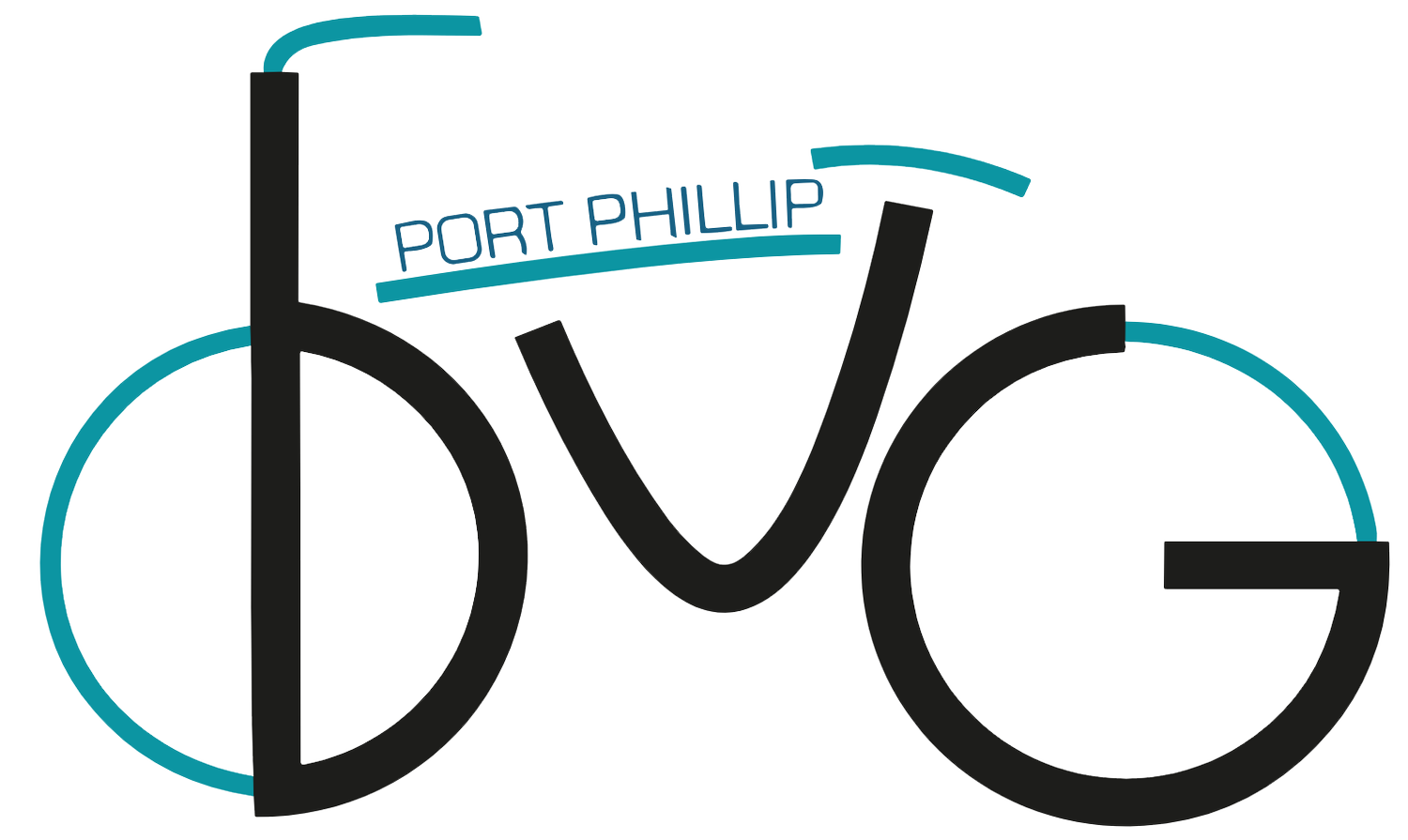PARK ST SOUTH MELBOURNE. At the Port Phillip Council meeting on 20th October, the Council resolved send a revised bike lane design for Park St out to consultation. The revision is a significant downgrading of the plan presented to Council in March. The March plan had protected, on-road lanes between St Kilda Rd and Moray St (and was a substantial improvement on the first plan). In order to preserve parking, the new plan moves the bike lane on to the footpath between St Kilda Rd and Kings Way. This makes it a worse experience for both pedestrians and cyclists, with no separation beyond paint, and a loss of directness as the bike lane winds up onto the footpath from the road. It's also rated by the engineers as significantly less safe. It's disappointing that Council has decided that walking and cycling needs to make way for parking, despite stating that their priorities are the opposite.
Nevertheless, the project does implement the council's bike lane strategy and is an improvement on what is now there.
Our submission to the consultation:
The current plans for the bike lanes are significantly worse than the plans proposed in March. In the earlier plan, the cycle lanes between St Kilda Road and Kingsway were protected and on-road. In this plan, they are moved onto the footpath.
This change...
* Provides a less attractive experience for cyclists, with a less direct path winding up and down from the footpath.
* Has worse sightlines, with lack of clear priority at side-streets
* Is more dangerous for pedestrians, as quantified in the supporting documents provided
* Is more dangerous for cyclists, as quantified in the supporting documents provided
* Takes space away from pedestrians, in direct contravention of the Move Live Connect strategy which is supposed to prioritise them.
This change has been implemented in order to provide a handful of car parks, again in contravention to the Move Live Connect strategy which is supposed to prioritise active transport.
Between Kings Way and Moray St, the temporary bike lanes are a very good solution and we hope they become permanent.
While the changes are an improvement to current conditions and hence we support them, they also represent a significant missed opportunity for an excellent bike connection to the new station and will be a weak point in our future network.
Please make a submission to the consultation by 12 December: https://haveyoursay.portphillip.vic.gov.au/park-street-streetscape-improvement-project











